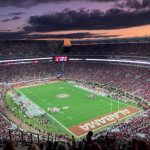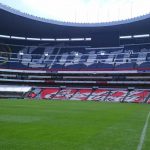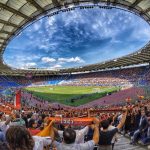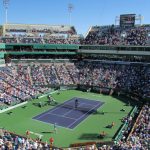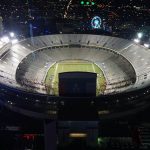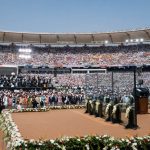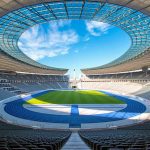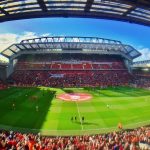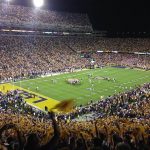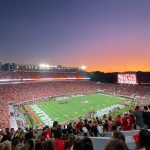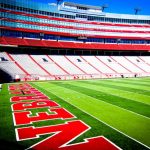It’s one of the most iconic sports stadiums in the world and one of the biggest stadiums in Europe.
In this post, you’ll discover the ultimate list of facts about Old Trafford, the home of one of the biggest football clubs in the world!
1. What is Old Trafford?
Old Trafford is the name of a football stadium in Greater Manchester, Northern England. It’s home to one of the most famous football clubs in the world, Manchester United.
Manchester United is the most successful football/soccer club in England and has won 20 league titles and multiple cups. It’s also one of the highest-earning football clubs in the world as well as the third-highest valued at well over £3 billion.
Old Trafford is the second biggest football stadium in England after Wembley, the country’s national football stadium, and the 7th largest club stadium in Europe.
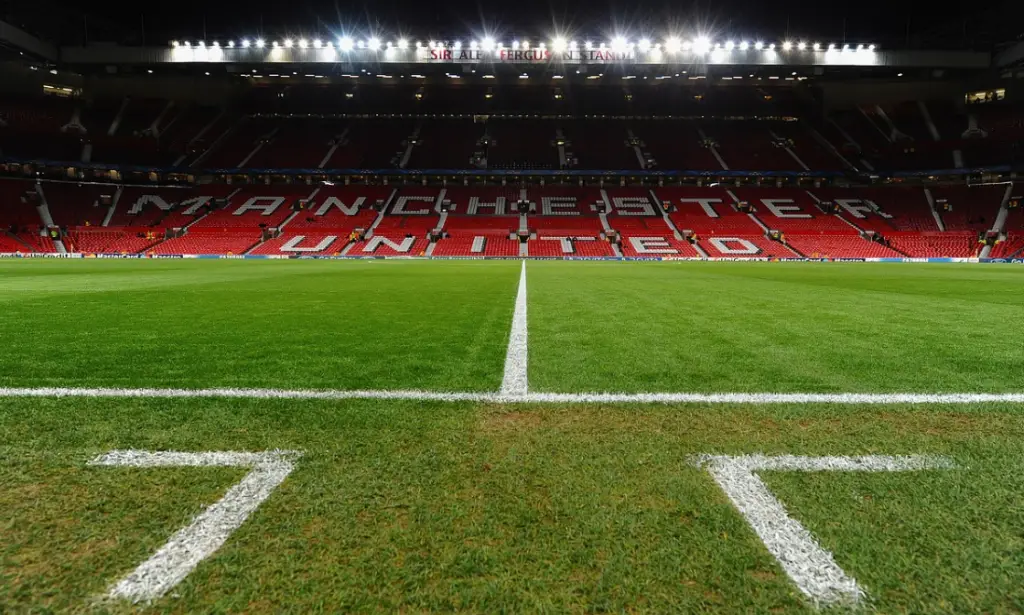
2. It has an amazing nickname
Manchester United won some titles in the early 20th century, but as mainly a struggling club for many decades. This all changed when legendary manager Sir Matt Busby took over and turned the club into one of the most successful clubs in the world (with a lot of help from his later colleague, Sir Alex Ferguson).
It’s the struggle that lasted for decades and the sudden change to become a world-famous football club that had one of the best players ever to make a legendary remark which was eagerly picked up by the media.
Sir Bobby Charlton once mentioned that old Trafford is the “Theatre of Dreams.” A football club started by railway workers, which was relegated over and over again for decades, but never lost the dream to become the best.
And eventually, they became the best, winning more titles and trophies than any other English football club in history!
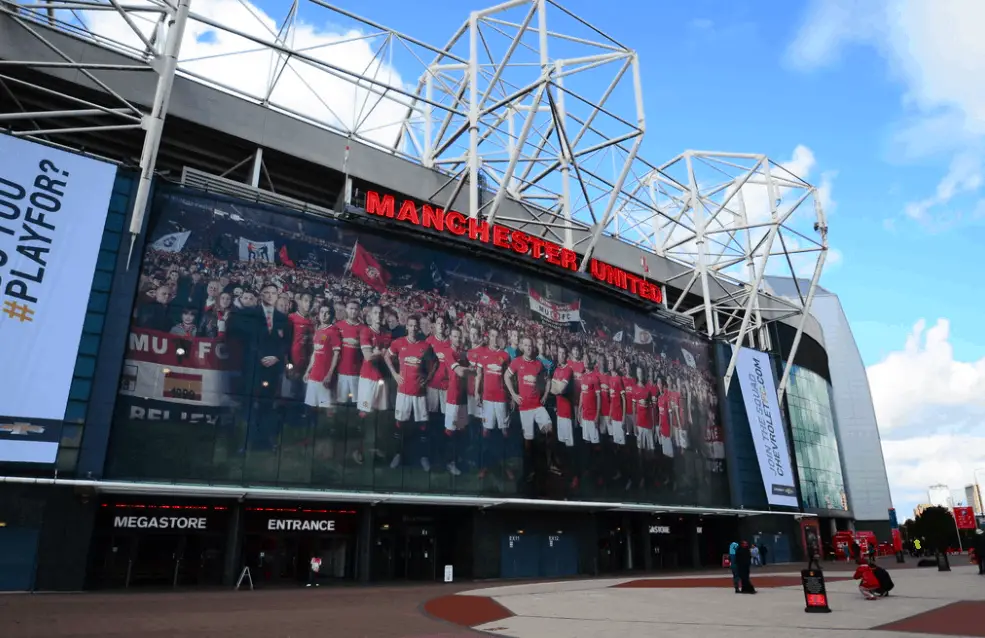
3. All their trophies are on display at Old Trafford
The stadium has an adjoined museum that explains the entire history of the club. Here you can see the iconic football shoes and shirts of some of the best players, the ball that won them the Champions League in the final minute, and basically see how it all began for the club.
Something that can’t be forgotten is the trophy closet which now holds an amazing number of trophies.
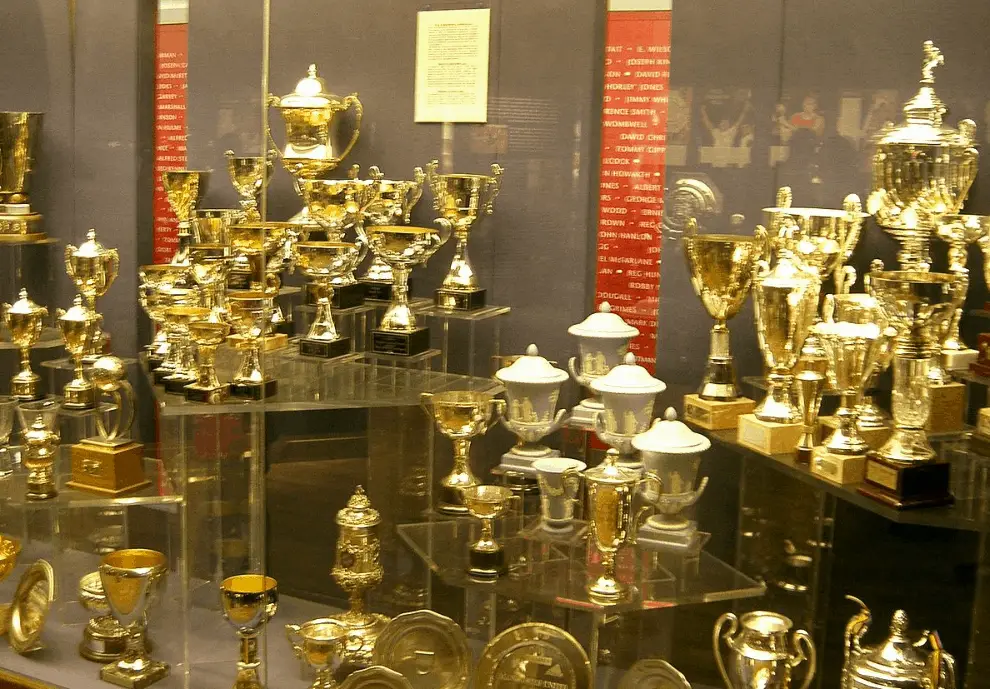
4. The stadium gave them a slandering name initially
The original plan of Old Trafford in the early 20th century was to build a stadium that could hold around 100,000 people. The budget for the entire project was about £60,000.
When construction started, it became clear, however, that a stadium of this size would cost a lot more. An extra £30,000 was needed to reach this capacity, so instead, it was advised to reduce the capacity to just 80,000.
This might not sound like a lot, but with inflation in mind, this would be over £7.2 million today!
Plus, transfer fees for players were only about £1,000 back then on average, so it’s not as if they could just sell a couple of players to fund the project as well.
This careless money-spending gave them the slandering name “Moneybag United” in the days that Old Trafford was being constructed in 1909.
5. Construction was finished in 1909
The architect of the stadium was specialized in the design of football stadiums. his name was Archibald Leitch, a Scottish architect who left his mark by designing dozens of stadiums for British and Irish football clubs.
Manchester United’s amazing new football stadium that could hold approximately 80,000 spectators was completed in late 1909.
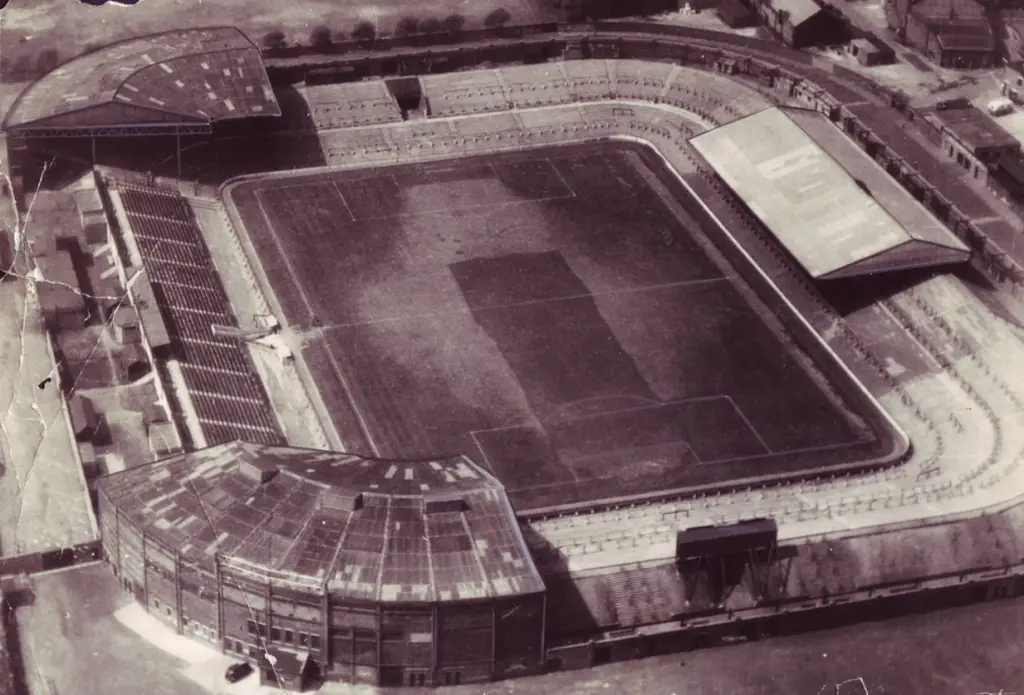
6. The inaugural game wasn’t a big success
We just want to clarify that the opening of the stadium itself was a huge success. People were attending the game in awe of such an amazing arena, and some commented that it was the “most remarkable arena they had ever seen.”
That being said, the opening game was lost to their rivals Liverpool FC with 3-4, so in that sense, it wasn’t a big success after all.
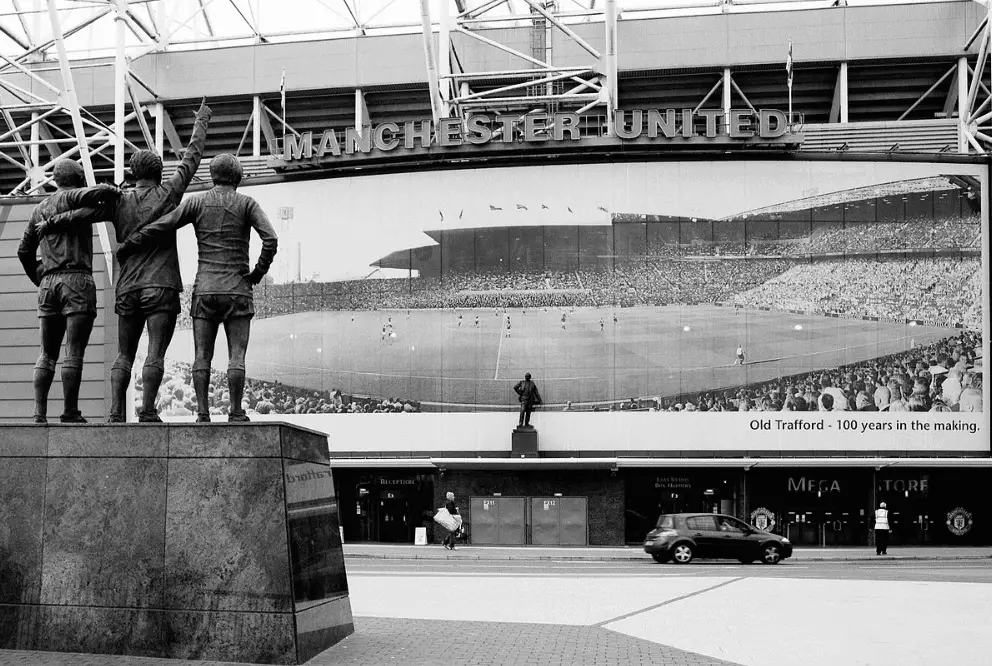
7. The highest attendance wasn’t during a United game
One of the most remarkable facts about Old Trafford is that the highest-ever attendance at the stadium wasn’t a game played by Manchester United themselves.
It wasn’t unusual that FA Cup finals or even semi-finals were being played at Old Trafford before Wembley Stadium was built in 1923. This also happened during World War II, and one of those games was the FA Cup semi-final, played on March 25, 1939, between Wolverhampton Wanderers and Grimsby Town.
This game attracted a total of 76,962 spectators, which remarkably still holds the record of the highest attendance ever at Old Trafford.
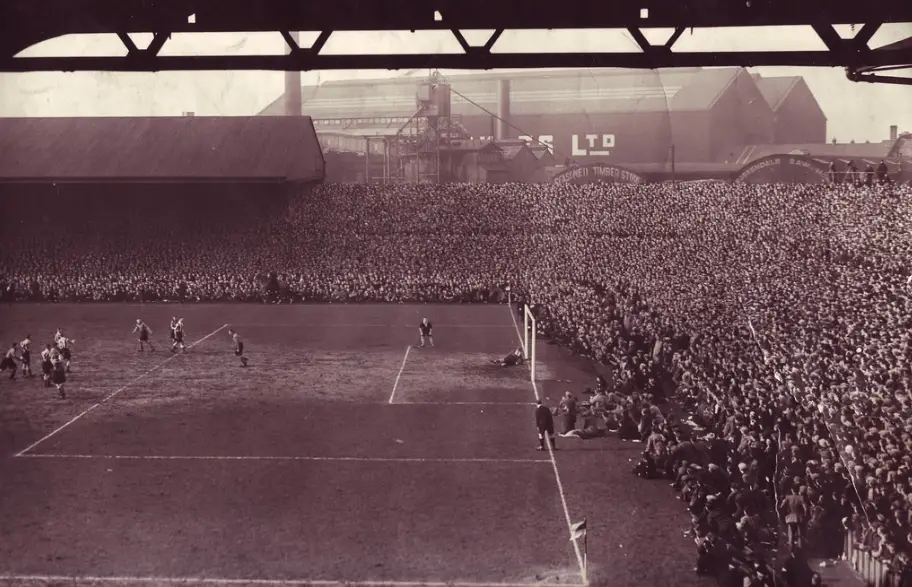
8. They were forced to play at their city rivals’ stadium for 8 years
World War II wasn’t a good time for Manchester United, and especially not for Old Trafford. As the stadium was claimed by the army and turned into a depot, it was bombed several times by the Nazis.
On March 11, 1941, it was bombed so heavily that it was impossible to continue playing games in the stadium, so they were forced to play elsewhere.
Where was that? At the ground of their city’s rivals Manchester City, a ground called “Maine Road.”
It took over 8 years for Old Trafford to be rebuilt. The first game played again in their own stadium was on August 24, 1949, when United beat Bolton Wanderers with 3-0, a game that was witnessed by 41,748 spectators.
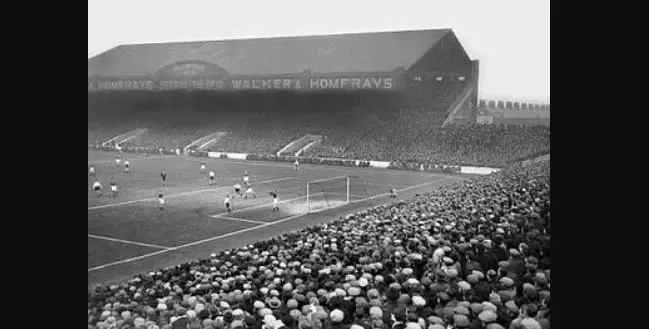
9. As the club’s successes grew, the stadium’s capacity went down
Old Trafford was rebuilt several times over the next decades. Obstructing pillars were removed, roofs were added above all stands, new stands were being built, and most importantly, the stadium was turned into an all-seater.
After the Hillsborough disaster in 1989 in which 96 people lost their lives, it was recommended in a report called the “Taylor Report” that all stadiums in England were converted to all-seaters.
The stadiums that could once hold 80,000 people were reduced to an all-time low capacity of just 44,000 in the early 1990s when the Stretford End was being redeveloped.
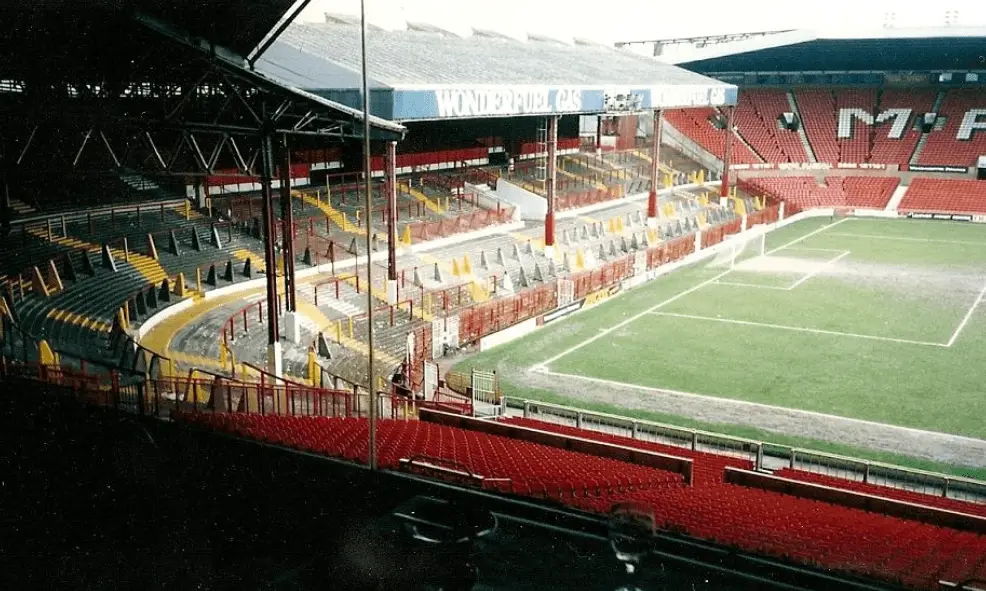
10. The stadium’s attendance record won’t be broken soon
It’s a bit of a disgrace for every Manchester United fan that the attendance record of Old Trafford wasn’t reached during a game played by the club itself.
Unfortunately, fans will have to wait until further expansions take place for this record to be broken.
Multiple phases of developments in the 1990s and early 2000s saw the stadium’s capacity grow to 76,212 until a rearrangement reduced it back to 75,957, which is the current capacity.
The bad news? The last expansion took place in 2006 and the plan laid out would require home games to be played at another stadium. This of rivals Manchester City or even Liverpool is the only one suited, but not really an option!
That’s why we believe that the attendance record, unfortunately, won’t be broken any time soon.
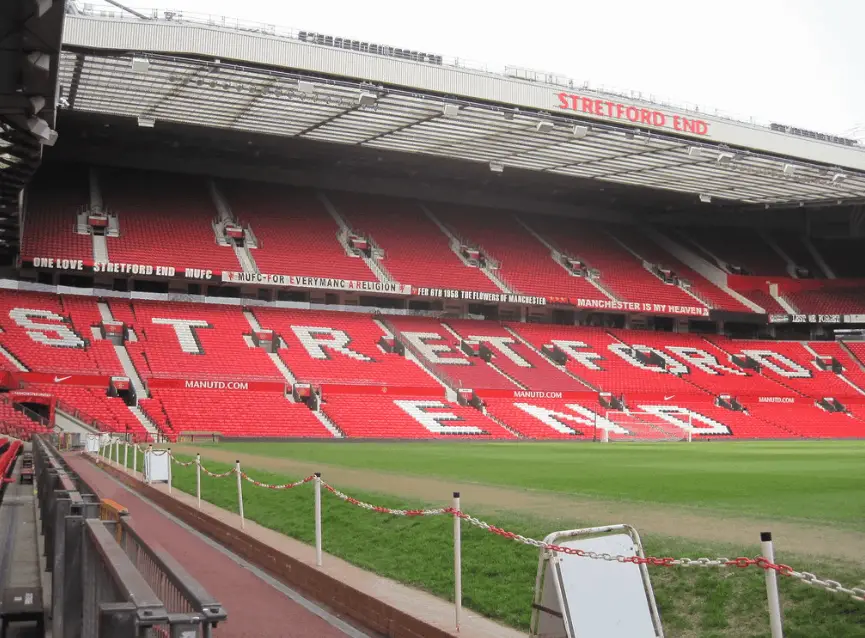
11. There’s a statue of the “Holy Trinity”
A traditional club like Manchester United commemorates its legendary players in multiple ways. Either they get a spot in the United Museum, or they are eternalized with a statue.
One of these statues is called the “United Trinity” and depicts three of the most important and arguably best players to ever play at Old Trafford in the colors of the club, George Best, Denis Law, and Bobby Charlton.
This statue is located just outside the stadium with the players looking towards Old Trafford.
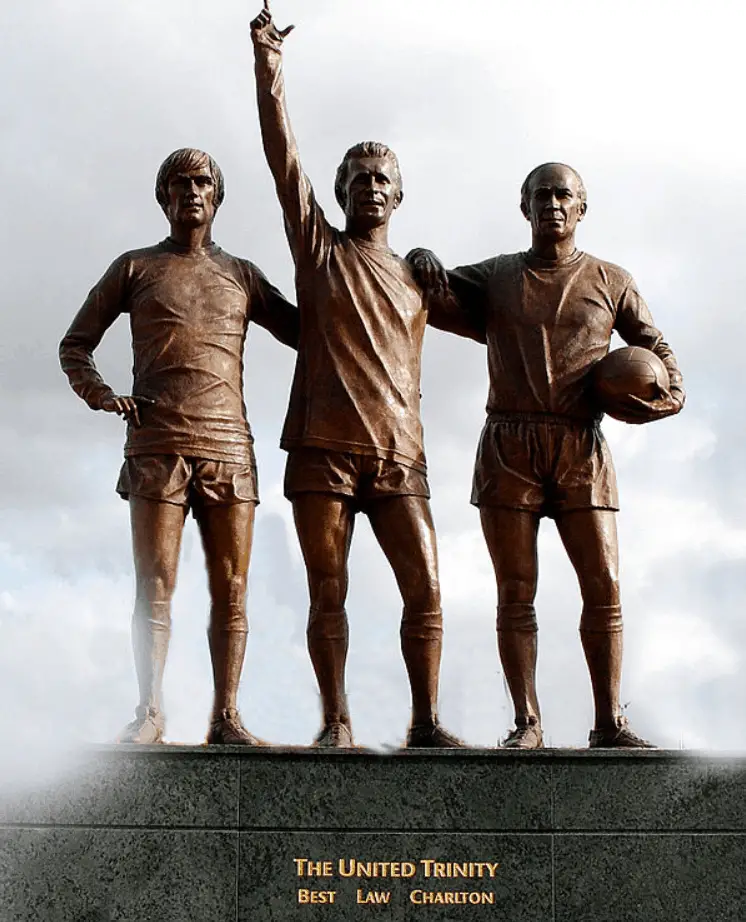
12. Managers aren’t forgotten as well
Commemorating the most famous players isn’t the only thing the club does, they also don’t forget about the best managers the club ever had.
Sir Matt Busby and Sir Alex Ferguson are eternalized with a statue just outside Old Trafford as well.
These are the two managers that really turned Old Trafford into the “Theatre of Dreams!”
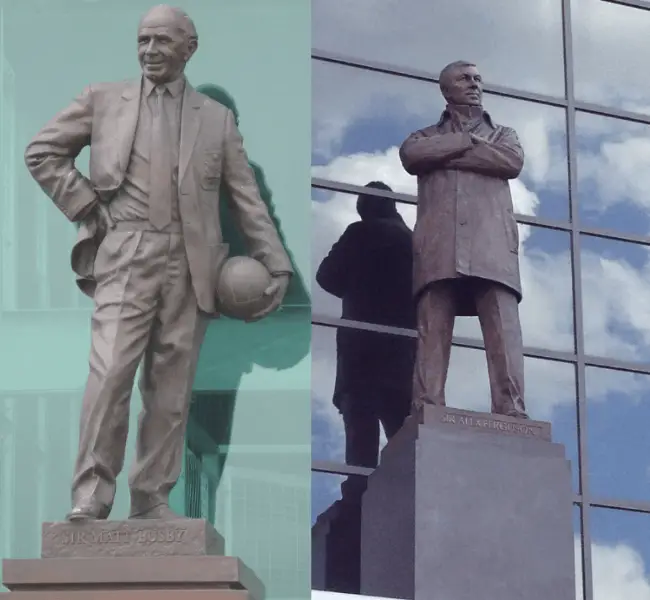
13. The biggest stand is named after a manager
The immensely successful manager, Sir Alex Ferguson, has a stand named after him. The biggest stand in the Stadium is called the “Sir Alex Ferguson Stand.”
He is the most successful manager that the club has ever had, leading United to many titles, domestic cups, and European cups.
His career at the club started in 1986 and ended in 2013. Sir Alex Ferguson is considered to be one of the best managers the game has ever seen and has on the most trophies of any manager in football history.
If you achieve this much success, an amazing stand like this is named after you:
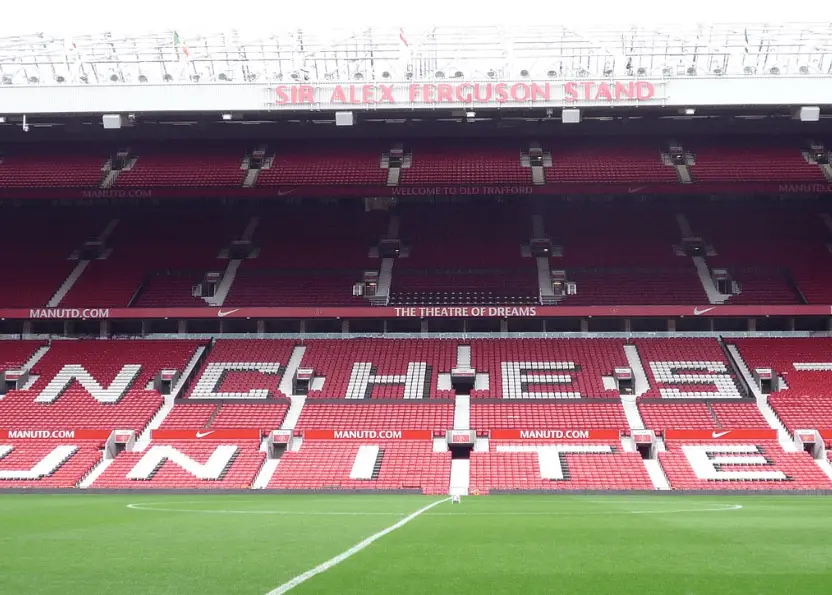
14. This is how legendary players (Christiano Ronaldo) are welcomed back
The tradition of respect and honoring the people that helped the dream to become reality isn’t just a part of the club’s management, it’s also part of the Manchester United fans.
When Christiano Ronaldo, one of the best players to ever play at the club, was playing for Real Madrid, he was actually cheered by United fans when he was playing for the other team.
Manchester United fans never forgot the great moments he gave them, and we’re pretty sure that this feeling is vice versa.
Check out the opening moments of an epic game at Old Trafford, and the reaction of the fans in the video below:


